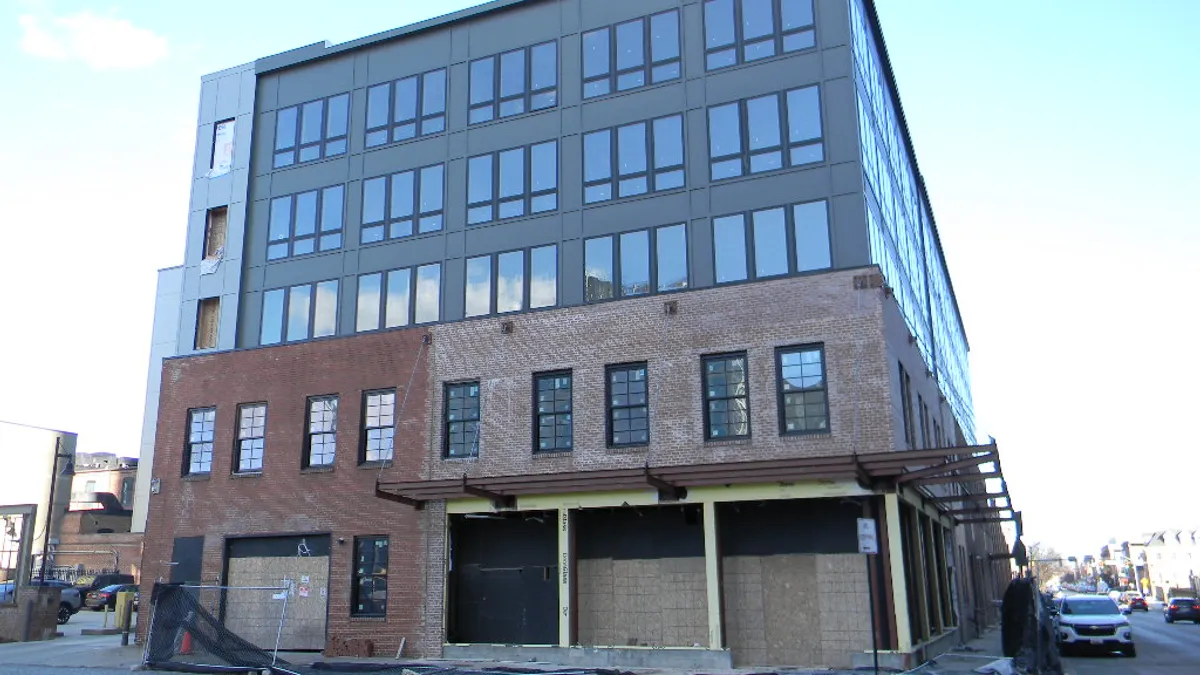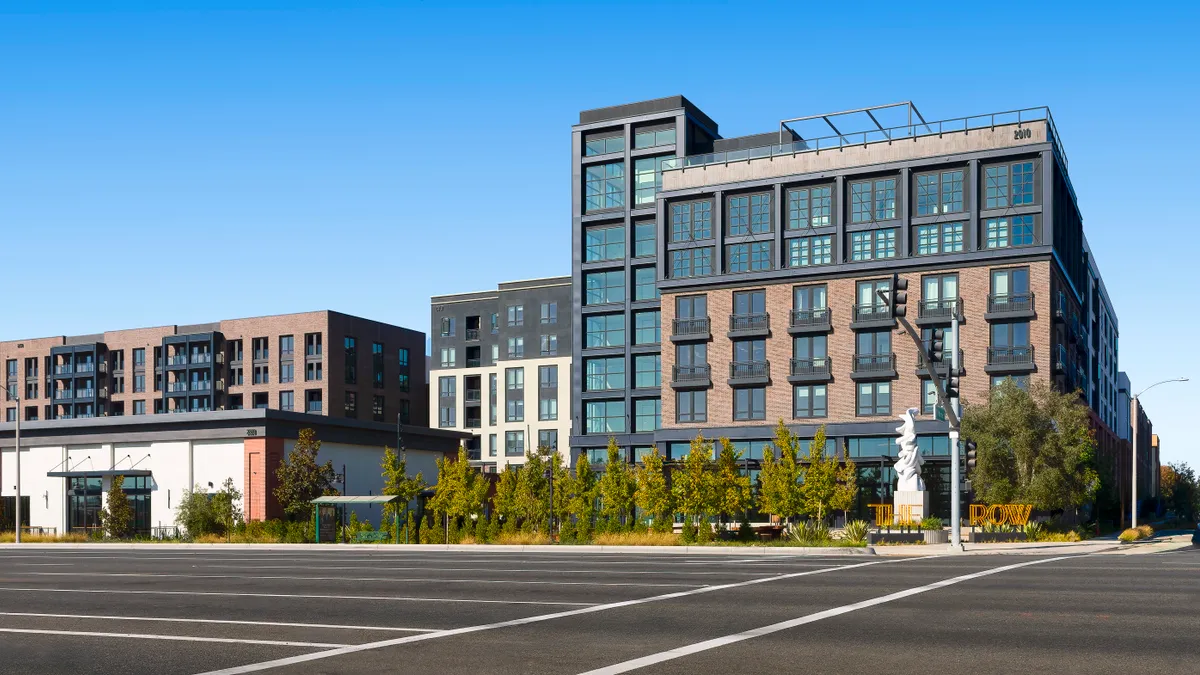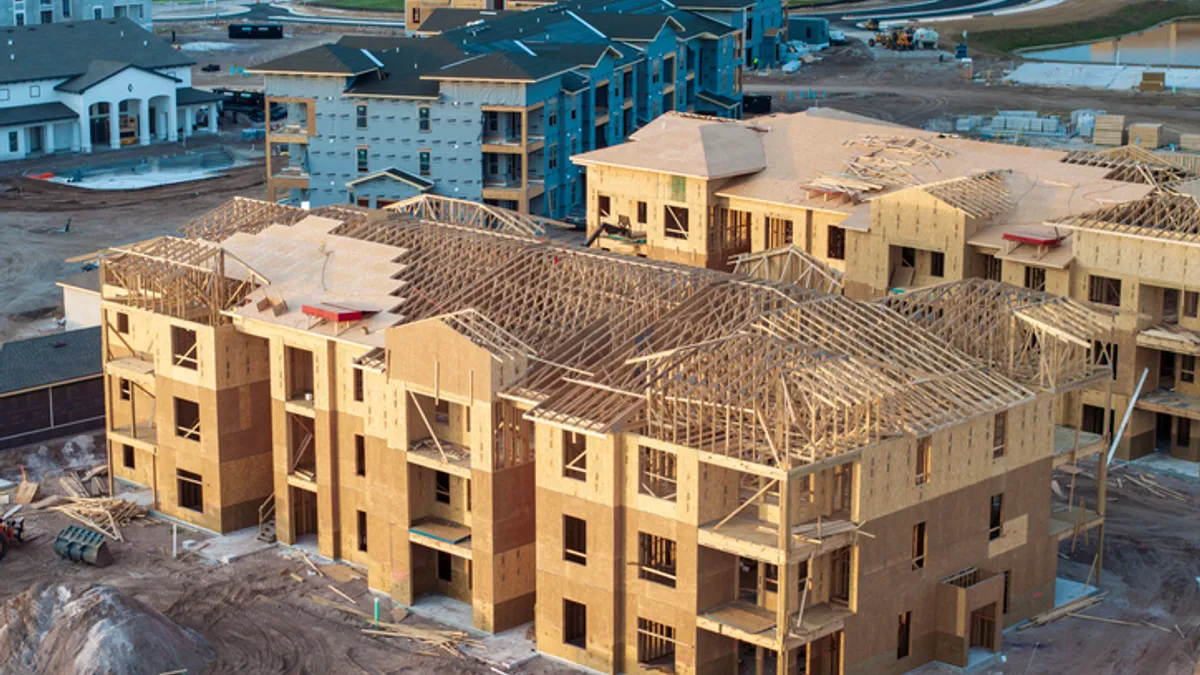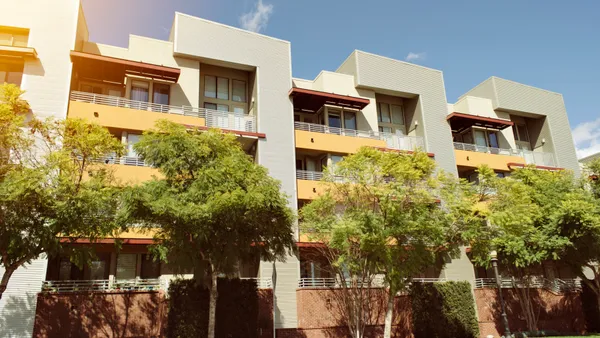Like many multifamily investors, Jamison Manwaring is watching and waiting.
Manwaring, the CEO and co-founder of Phoenix-based real estate crowdfunding company Neighborhood Ventures, which owns roughly 350 units in Arizona, recently launched the Arizona Multifamily Opportunistic Fund. The vehicle aims to purchase five to 10 multifamily properties in the state, mainly in the middle market, being sold at 30% discounts.
Although Manwaring is attempting to target distressed assets and has seen some apartments trade at prices 20% to 25% below their intrinsic values, he doesn’t expect widespread pain in the apartment industry even as more owners and developers face rising maturities and higher interest rates.
“We're not seeing broad-based distress,” Manwaring told Multifamily Dive. “We're just seeing it in pockets.”
With a relatively modest buying appetite, pockets of distress could be enough for Manwaring.
As loan coupons have risen 200 to 300 basis points, owners with floating-rate loans and expiring caps have seen their debt service costs rise dramatically and property values fall 20% to 30% from their 2022 peak, according to a recent report from Yardi Matrix. But those investors expecting widespread buying opportunities for relatively cheap prices have been disappointed.
“Despite expectations, opportunistic transactions have been slow to come about, since the first choice for most property owners and lenders is to avoid defaults by negotiating extensions,” Yardi said in the report.
But distress could rise in 2024 as lenders slow loan extensions, maturities increase and interest rate caps burn off.
Extend and pretend redux
During the Global Financial Crisis, scores of apartment investors created opportunity funds, anticipating waves of distressed assets that they were sure would hit the market at deep discounts. While some of those buyers did find deals, many were left empty-handed as banks worked with troubled borrowers to extend loans even if they weren’t performing.

“Distress after the 2008 financial crisis never got as bad as most expected, including me,” said Paul Fiorilla, director of U.S. Research at Yardi Matrix. “A lot of it was because of extend and pretend, which often is used as a term of derision, but it prevented delinquencies and reduced bank losses. As the market recovered, the loans were paid off and the distress never materialized.”
That scenario seems to be playing out again on a smaller scale.
Twenty percent, or $929 billion, of the $4.7 trillion of outstanding commercial mortgages held by lenders and investors will mature in 2024, a 28% increase from the $729 billion that matured in 2023, according to the Mortgage Bankers Association’s 2023 Commercial Real Estate Survey of Loan Maturity Volumes.
Initially, $659 billion in commercial mortgages were set to mature this year. However, lenders and servicers offered extensions and modifications that helped raise that figure to $929 billion. Another source, real estate data firm Cred iQ, reported that $13.6 billion across 441 CRE loans were modified in 2023.
CRE maturities to rise in 2024
| Lender | Total maturing | % maturing |
| Depositories | $441 billion | 25% |
| CMBS, CLOs, ABS | $234 billion | 31% |
| Credit companies | $168 billion | 36% |
| Life insurance | $59 billion | 8% |
| Government-backed | $28 billion | 3% |
SOURCE: MBA
Out of all the real sectors, apartments had the largest number of extensions, at $62 billion, followed by office with $55 billion, according to Jim Costello, co-head of data provider MSCI's real-assets research team.
“We’ve definitely been seeing lenders who would rather kick the can down the road, give it some time, and see if interest rates can come down a little bit so they can work with that sponsor,” Manwaring said.
On Palo Alto, California-based REIT Essex Property Trust’s fourth-quarter 2023 earnings call, CEO Angela Kleiman shared those sentiments. “Lenders have generally been accommodating to sponsors extending debt maturities when feasible,” she said.
Changing tone?
However, each lender’s situation is different. “Not all debt providers and equity providers are able to [extend loans],” AvalonBay Communities CEO Ben Schall said on the Arlington, Virginia-based REIT’s Q4 earnings call. “So that does create the potential for some dislocation. But we're not necessarily seeing its size. I'd say we're preparing to be ready to take advantage of it.”
Banks, traditionally constrained by capital reserve requirements, have slowed new lending as they work with current borrowers and as regulators have allowed them to extend loans, according to observers. Costello said national banks led all lender groups in CRE extensions with $53 billion in extensions, followed by regional banks with $52 billion.
Investor-driven lenders, such as debt funds and collateralized loan obligations, provided $34 billion in extensions. But they have been getting more aggressive in taking control of properties, according to some observers. “They take back the asset and make sure that they protect their own principal by reinvesting the asset on an equity basis,” said Vincent DiSalvo, chief investment officer at Boston-based apartment owner Kingbird Investment Management.

Commercial mortgage-backed securities lenders, which hold around 2% of the market share, have less flexibility, according to Fiorilla. “CMBS has less flexibility because workouts have a process that goes through special servicers,” he said.
If more lenders start dragging their heels on extensions, owners will be forced to put troubled properties on the market. “Owners of stabilized assets will see pressure to transact as loans mature and extensions that were agreed to with lenders last year expire,” said Alec Brackenridge, chief investment officer at Chicago-based Equity Residential, on the REIT’s Q4 earnings call.
Maturities increase
As lenders decide on extensions, they’ll soon face a growing number of multifamily maturities. In 2024, $61.8 billion is set to mature, followed by another $84.3 billion in 2025, according to a report from Yardi.
Zoom out further, and the maturity picture is staggering. Over the next five years, 58,533 properties, representing $525 billion of the total $1.1 trillion of loans currently backed by apartments, will see their loans mature, according to Yardi.
Apartment executives see this wave of maturities and think it could provide buying opportunities. “We're not currently seeing much distressed selling at all in our markets,” said Rylan Burns, senior vice president of investment strategy at Essex, on the REIT’s Q4 earnings call. “Given the amount of debt coming due in the next couple of years, we anticipate there should be some opportunities.”
Projected national maturities by year
| Year | Total |
| 2024 | $61.8 billion |
| 2025 | $84.3 billion |
| 2026 | $89.3 billion |
| 2027 | $77.9 billion |
| 2028 | $107.3 billion |
SOURCE: Yardi Matrix
Investors on the private side agree. “We think there will be opportunities in some of that upcoming maturity wall,” said Doug Faron, managing partner of West Palm Beach, Florida-based apartment and single-family rental owner Shoreham Capital.
In addition to maturities increasing, expiring loan caps could also force sales. If interest rates rise, borrowers with floating-rate debt often buy loan caps to set a ceiling on their borrowing costs. Without those caps, they’re writing bigger debt service checks.
“The rate caps that were purchased in 2021 and 2022 are expiring this year,” Manwaring said. “And that's a big catalyst driving some of these properties that have been functioning because they're still paying a 3.5% and 4% rate, and now they're going up to 7.5%.”
Once borrowing costs rise with the caps, Manwaring thinks those owners will be forced to sell. “We've seen recently, in the last two or three months, some of the sponsors just saying, ‘Hey, we're going to go ahead and cut our losses.’ It's costing them so much money every month to operate.”
Potential lifelines
With maturities rising, loan caps expiring and banks becoming less likely to extend problem loans, it seems likely more apartment loans will face issues this year. Already, there are signs of problems.
Multifamily distress outpaced all other commercial real estate sectors in February, jumping 80 basis points to more than 3%, according to a report from real estate data firm Cred iQ. The data firm, which aggregates the payment and special servicing status for each loan to arrive at its distress rate, said the multifamily sector posted its largest increase in distress in 18 months in February.

Fiorilla sees pockets of distress in certain markets, but not widespread issues. “I can see the delinquency rate going up, but not to the point where we'll have a systemic crisis,” he said.
Some veteran CEOs agree. On his REIT’s Q4 earnings call, UDR CEO Tom Toomey said he saw the range of distress as one or two, presumably REIT-quality, deals per market that will get picked off by buyers.
Toomey said the presence of Fannie Mae and Freddie Mac as a capital backstop should limit distress. Camden Property Trust CEO Ric Campo thinks falling interest rates will keep the damage to a minimum.
“That is keeping some of the pressure off of people having to sell,” Campo said on the Houston-based REIT’s Q4 earnings call.
If that happens, a lot of people with visions of deep discounts could again be left disappointed.
Click here to sign up to receive multifamily and apartment news like this article in your inbox every weekday.



















